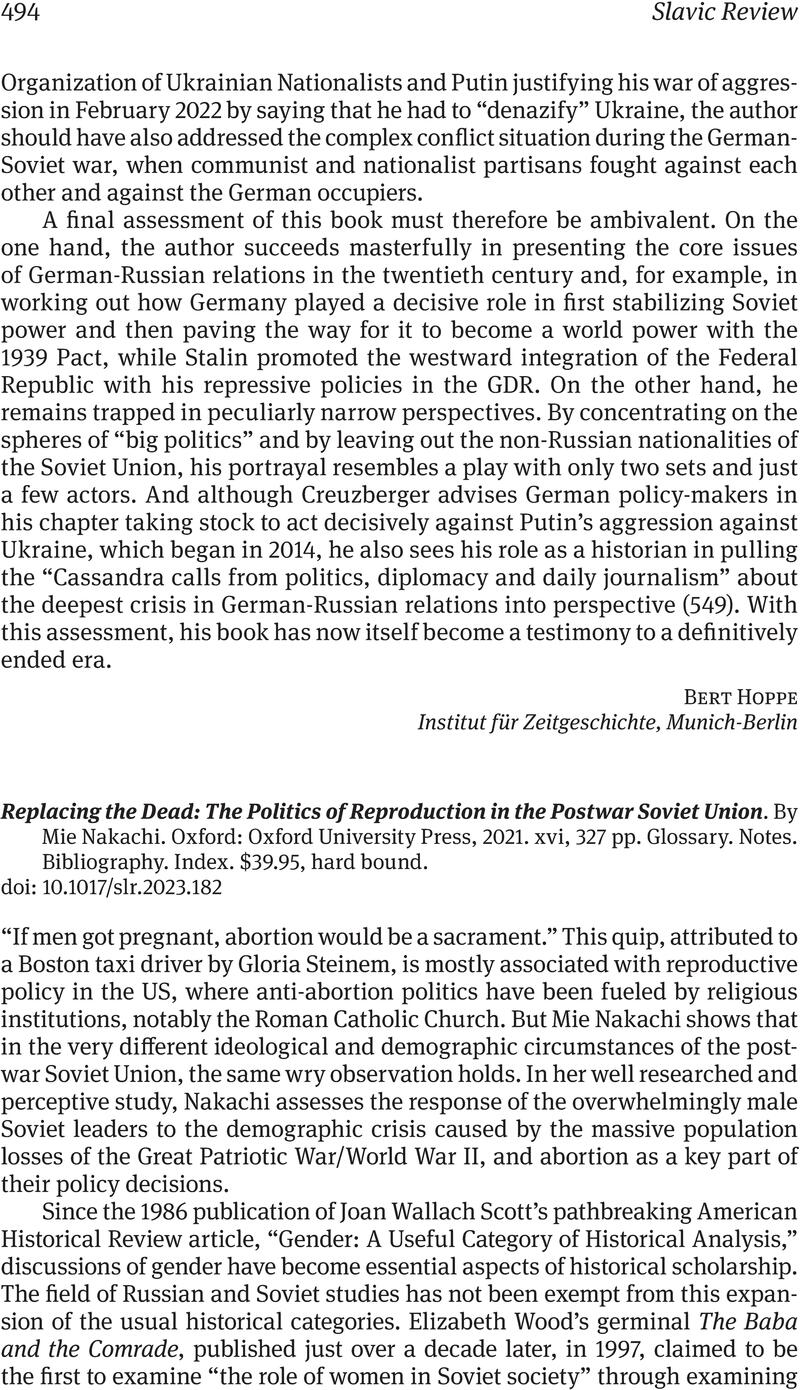No CrossRef data available.
Published online by Cambridge University Press: 01 November 2023

7. Wood, Elizabeth, The Baba and the Comrade: Gender and Politics in Revolutionary Russia (Bloomington, 1997), 3Google Scholar.
8. Wood, Baba and the Comrade, 1.
9. Ibid.